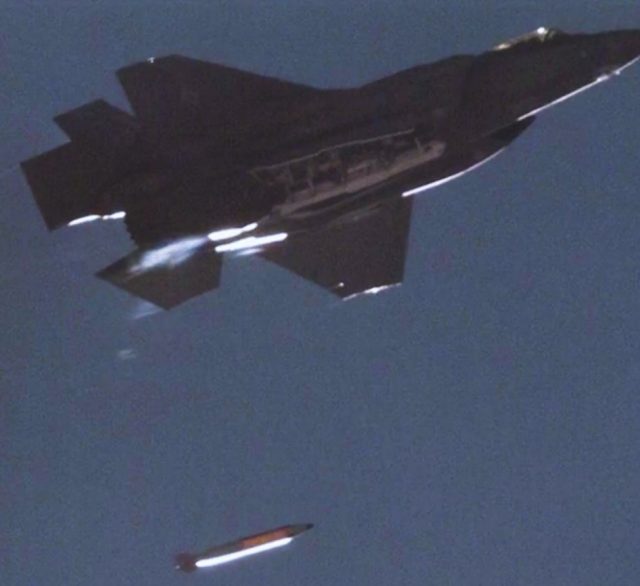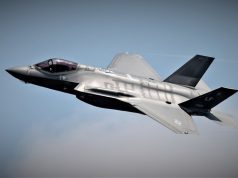A US Air Force F-35A aircraft recently tested the deployment of a mock B61-12 guided nuclear bomb, marking its first release from an internal bomb bay at supersonic speed.
The drop-test in the Nevada desert successfully completed the first in a series of flight tests with the US Air Force’s newest fighter jet.
The flight test of the B61-12 with the F-35A Lightning II this summer was the first ever at Sandia National Laboratories’ Tonopah Test Range featuring the fighter jet. It was also the first of a testing series that will conclude with full-weapon systems demonstrations.
“We’re showing the B61-12’s larger compatibility and broader versatility for the country’s nuclear deterrent, and we’re doing it in the world of COVID-19,” said Steven Samuels, a manager with Sandia’s B61-12 Systems Team.
In partnership with the National Nuclear Security Administration, Los Alamos National Laboratory and the Air Force, Sandia completed a B61-12 full-weapon system demonstration with the F-15E Strike Eagle fighter jet in March, and another in July with the Air Force’s B-2 Spirit bomber.
During the August 25 flight test, an F-35A flying faster than the speed of sound dropped a B61-12 — containing non-nuclear and mock nuclear components — from about 10,500 feet above Tonopah Test Range. The inert B61-12 struck the desert floor in the designated target area about 42 seconds later.
“We successfully executed this historic, first-ever F-35A flight test at Tonopah Test Range within the specified delivery criteria,” said Brian Adkins, range manager at TTR.
According to Sandia, initial data shows that all systems and interfaces between the refurbished bomb and the F-35A worked as expected.
Unlike previous fighter jets, the F-35A carries the bomb internally. The recent flight test was the first demonstration of a fully instrumented B61-12 release from an internal bomb bay on a fighter and the first such release at speeds of Mach 1 or greater, Samuels said.
“This was the first test to exercise all systems, including mechanical, electrical, communication and release between the B61-12 and the F-35A,” he said.
The F-35A is a fifth generation fighter and is described by an Air Force online fact sheet as an “agile, versatile, high-performance, 9-G capable multirole fighter” with stealth technology and advanced sensors. Nine countries — the United States, the United Kingdom, Italy, Netherlands, Turkey, Canada, Denmark, Norway and Australia — were involved in the fighter jet’s development.
“The latest test is a critical piece in the F-35A and B61-12 program,” Samuels said. “Aboard the newest fighter, the B61-12 provides a strong piece of the overall nuclear deterrence strategy for our country and our allies.”
B61-12 Life Extension Program
The compatibility testing is an essential part of the B61-12 Life Extension Program to refurbish, reuse or replace components, extend the bomb’s service life, and improve its safety, security and effectiveness.
A life extension program allows scientists and engineers to address the aging of nuclear weapons components. Some components are requalified and go back into a weapon without change; others that have aged are remanufactured using the original specifications; and sometimes the original technology is no longer available, so Sandia redesigns those parts using modern technology.
The first B61 entered service 50 years ago, and over the decades numerous modifications have been made to increase safety and reliability. The B61-12 consolidates and replaces most of the previous variants. The National Nuclear Security Administration recently announced plans to manufacture the first refurbished B61-12 in fiscal year 2022.



























